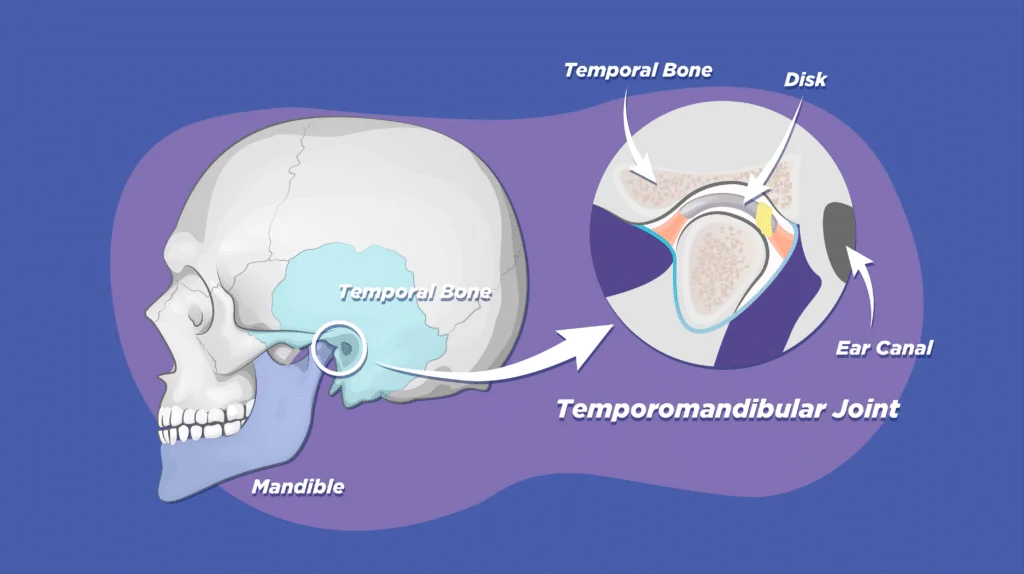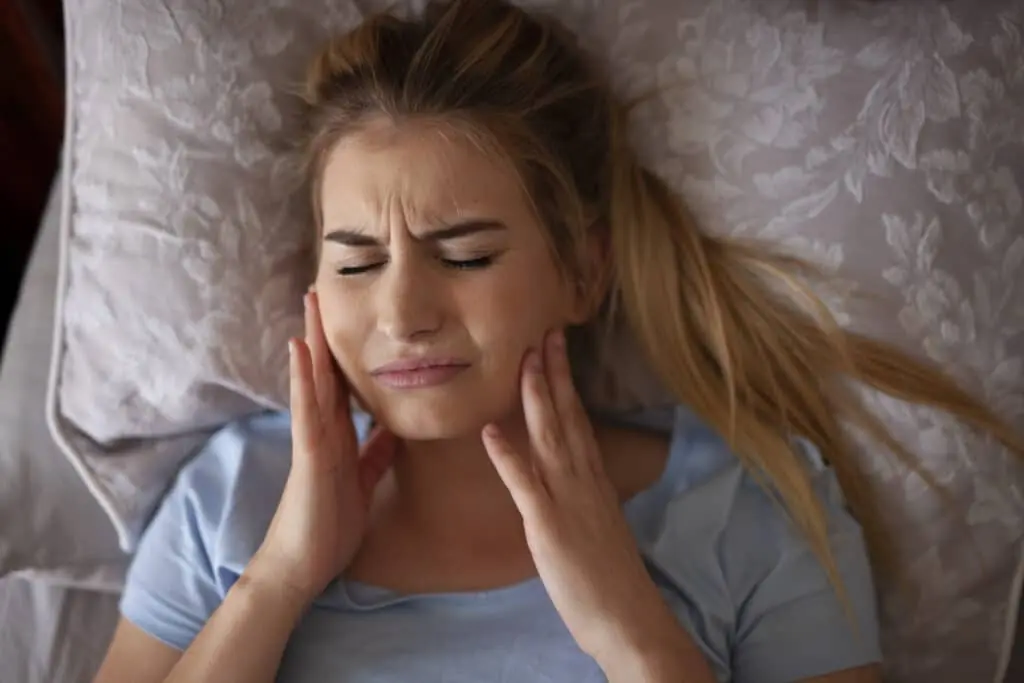What is TMJ and TMD?
The temporomandibular joint (TMJ) is the jaw joint that connects the temple (skull) to the mandible (lower row of teeth). It allows the two rows of teeth to come together through a hinge at the side of the face. The function of the TMJ is chewing, talking, and any task that requires opening the mouth.
TMD stands for temporomandibular joint disorder or dysfunction. It represents a problem with pain, clicking, and stiffness in the temporomandibular joint and surrounding structures. An articular disc, similar to the meniscus of the knee, helps disperse forces and guide movement and is found within the joint along with many nerves. When the bony structure or the disc does not function properly, it can irritate the nerves and cause sharp or dull pain.

TMD Causes
Causes of TMD include, but are not limited to:
Poor Posture Habits
TMD can occur from sitting at a desk all day, as we often hold our heads too far forward as we work. However, poor posture can happen anywhere. For example, sitting in the car for a long commute, working at a checkout station, cradling a telephone receiver against the same shoulder for long periods, and always carrying your child on the same hip. All these scenarios can place the head in an abnormal posture and contribute to TMJ pain. The “forward head” posture strains the TMJ’s muscles, disk, and ligaments. The jaw is forced to “rest” in an open position, and the chewing muscles become overused.
Chronic Jaw Clenching at Night (“Bruxism”)
Many people clench their jaws at night while they sleep, usually because of stress. This strains the TMJ because of the constant pressure on the joint and surrounding muscles.
Problems with Teeth Alignment (“Malocclusion”)
If your teeth come together in an unusual way, abnormal stress may be placed on one or both joints.
Surgery/Dental Work
The TMJ may lose mobility and function following surgery on the face and jaw or prolonged dental work.
TMD Symptoms
Symptoms include:
- Jaw pain
- Jaw fatigue
- Difficulty opening your mouth to eat or talk
- Ringing in your ears
- Headache
- Popping/clicking sounds in your jaw or ear
- Neck pain
- Locking jaw

How Can a PT Help?
TMD treatment focuses on restoring mobility and reducing pain in the jaw. You may receive a diagnosis of TMJ dysfunction from your dentist, physician or your physical therapist (PT). Your physical therapist can help decrease pain and restore the natural movement of your jaw. Treatments used by physical therapists for TMD include:
Posture Education
If your PT finds that you sit with your head in a forward position, there is likely a greater strain on the muscles of the neck and jaw increasing the stress on the TMJ. You may also be clenching your teeth at rest contributing to muscle spasms. Your therapist will teach you to be aware of your posture to improve the resting position of your jaw, head, neck, breastbone, and shoulder blades when you’re sitting and walking.
Maintaining a good sitting posture is key to preventing TMJ problems. Your physical therapist will show you how to do this to prevent future episodes of TMD.
Improve Jaw Movement
Physical therapists use manual therapy to increase movement and relieve pain in tissues and joints. For example, your therapist might stretch your jaw to restore normal joint and muscle flexibility or break up scar tissues that sometimes develop when there is an injury.
Your physical therapist will teach you special “low-load” exercises—exercises that don’t exert a lot of pressure on your TMJ but can strengthen the jaw muscles and restore a more natural, pain-free motion.
Find a PT Near You
It is important to recognize the symptoms of TMD so you can get the help you need. Use our interactive map tool to find a physical therapist in your area. We are dedicated to helping you live pain-free, so schedule an appointment today.
Reviewed by: Michelle Wood, PT, DPT, OCS, SCCE
Strive Physical Therapy & Sports Rehabilitation
A Member of the Confluent Health Family


